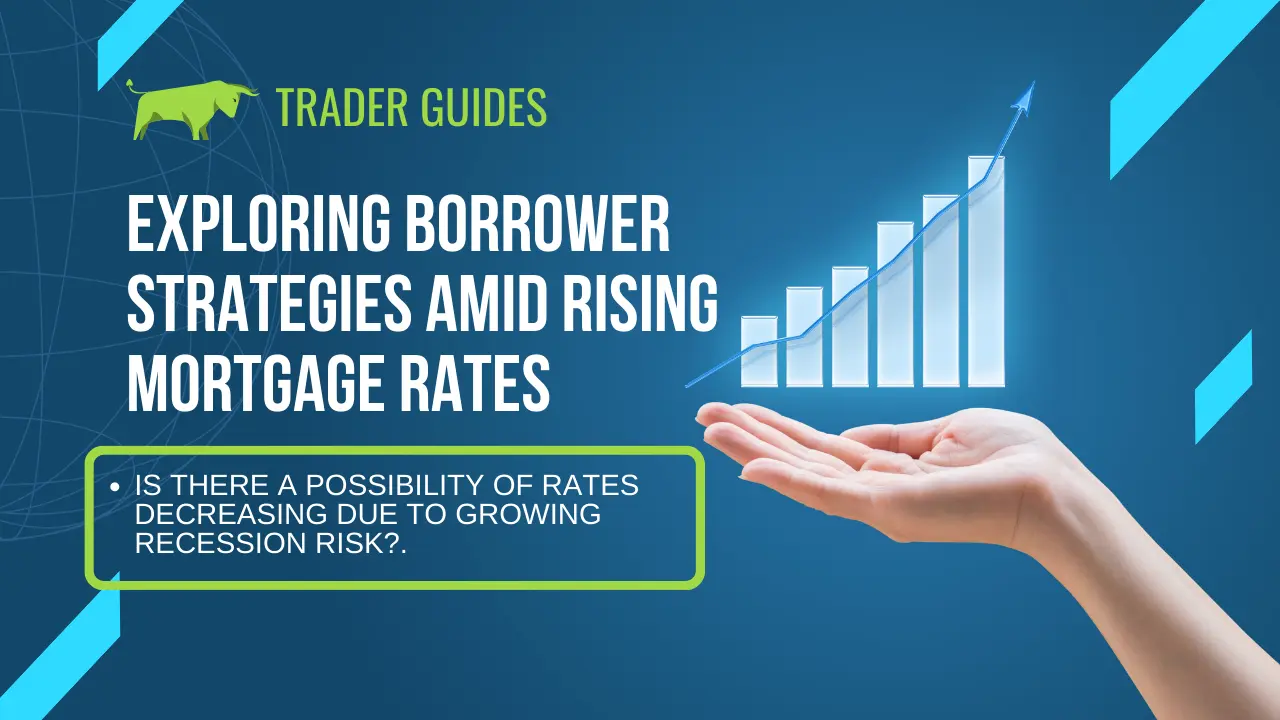
Mortgage rates significantly influence the housing market. Recent announcements of rising rates have raised concerns among borrowers and industry experts.
In recent years, mortgage rates have experienced historically low levels, contributing to a surge in home buying and refinancing activity. However, the situation is now evolving as mortgage rates are gradually rising.
According to recent data, national mortgage rates have increased for all types of loans compared to the previous week. Rates for 30-year fixed, 15-year fixed, 5/1 adjustable-rate mortgages (ARMs), and jumbo loans have risen.
The Federal Reserve has raised rates continuously ten consecutive times, with the most recent increase occurring during its May 3 meeting. As a result, rates have reached a 15-year high. However, there is a consensus that inflation is cooling down, and the central bank may cease further rate hikes.
Lisa Sturtevant, the chief economist at Bright MLS, explains that mortgage rates have stabilized at around 6.5 percent for 30-year fixed-rate loans. There is a possibility of rates decreasing due to growing recession risks. However, it is unlikely that they will return to the exceptionally low level of 3 percent witnessed during the pandemic's peak.
Several factors contribute to the upward trajectory of mortgage rates. One significant factor is the monetary policy decisions of the Federal Reserve, which can impact short-term interest rates. The Federal Reserve's strategy to combat inflation and stimulate economic growth through rate hikes can result in higher borrowing costs.
Economic indicators and global factors, such as inflationary pressures, employment levels, and international economic conditions, are influencing mortgage rates.
Rising mortgage rates have direct implications for borrowers. One of the immediate effects is the increase in monthly mortgage payments. As rates climb, borrowers may experience affordability challenges, especially those on the edge of qualifying for a loan.
The increased borrowing cost could also influence prospective homebuyers' decision-making process, potentially reducing demand. Additionally, borrowers considering refinancing may need to reevaluate their options, as higher rates may reduce the potential savings.
When faced with a rising rate environment, borrowers have several techniques to navigate the changing landscape effectively. Here are some fundamental approaches to consider:
Exploring the option of adjustable-rate mortgages can be advantageous for borrowers anticipating selling or refinancing their property within a specific timeframe.
ARMs have more affordable initial interest rates than fixed-rate mortgages, making them attractive for short-term ownership plans. However, borrowers should carefully assess the risks associated with ARMs, such as the possibility of rates increasing significantly in the future.
Locking mortgage rates through rate lock agreements can provide stability and safeguard against future rate increases. This strategy involves agreeing with the lender to secure a specific interest rate for a defined period, typically from a few weeks to a few months.
By doing so, borrowers are protected from market fluctuations during the rate lock period, allowing them to plan their finances accordingly.
When you apply for mortgage loans, obtain mortgage pre-approval. Borrowers can take a proactive step to secure favorable rates in advance, protecting themselves from further rate hikes.
Pre-approval involves working with a lender to assess your financial situation, creditworthiness, and income to determine the loan you qualify for and the rate you can secure. This process provides borrowers with a clear understanding of their budget and helps streamline home-buying when rates are rising.
Exploring refinancing options can benefit existing homeowners in a rising rate environment. Refinancing involves replacing the current mortgage with a new one, typically with more favorable terms, such as a lower interest rate.
By refinancing before rates climb higher, borrowers can reduce their monthly mortgage payments or shorten the loan term, saving money over the long run.
Borrowers should take the time to evaluate their overall financial situation and assess their ability to handle higher mortgage payments. This includes considering their income stability, job security, and other financial obligations.
A clear understanding of their financial flexibility enables borrowers to make informed decisions regarding their mortgage, whether choosing a fixed-rate or adjustable-rate option or considering refinancing.
The impact of rising mortgage rates extends beyond individual borrowers and can influence the housing market. Affordability constraints resulting from higher rates may lead to a cooling of demand, particularly among first-time homebuyers.
This shift in demand could potentially slow down the pace of home price appreciation, bringing about a more balanced market. It may also impact the new construction and real estate sectors, influencing developers, builders, and investors.
The rise in mortgage rates has significant implications for borrowers and the housing market. As rates increase, borrowers must assess their affordability and explore strategies to navigate this changing landscape effectively. Similarly, mortgage lenders and professionals must adapt their approaches to meet the evolving needs of borrowers.

Subscribe to our daily newsletter and get the best forex trading information and markets status updates
Trade within minutes!
Comment (0)